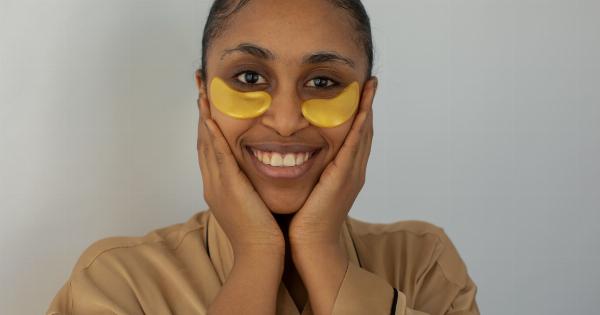Getting a foreign object stuck in your eye can be an uncomfortable and distressing experience. One such object that can cause significant discomfort is barley or a barley grain. This tiny, sharp-edged particle can cause irritation, redness, and pain.
In this article, we will explore the causes of a barley in your eye and discuss various treatment options to alleviate the discomfort.
What is Barley?
Barley is a cereal grain that belongs to the grass family. It is commonly used as a staple food source in various parts of the world.
Since barley grains can be quite small and have pointed edges, they can easily get lodged in the eye when they come into contact with it.
Causes of Barley in Your Eye
There are several ways in which a barley grain can enter your eye:.
1. Windblown Barley: On a windy day, if you are exposed to areas where barley is being grown or processed, the wind can carry barley grains and deposit them in your eyes.
You may not even realize that the barley has entered your eye until you start experiencing discomfort.
2. Cooking or Handling Barley: If you cook or handle barley without taking proper precautions, some grains may escape and end up in your eye.
It is crucial to handle barley with care and keep it away from your face to minimize the risk of particles getting into your eyes.
3. Children’s Play: If you have young children who play with barley grains for craft or sensory activities, there is a possibility that the grains may accidentally find their way into your eyes while you interact with your children.
4. Contaminated Cosmetics: Sometimes, barley grains can be present in cosmetic products, especially those that contain natural or herbal ingredients.
If these grains come into contact with your eyes due to improper use or contamination of the product, they can cause irritation and discomfort.
Symptoms of Barley in Your Eye
When a barley grain enters your eye, the following symptoms may occur:.
1. Eye Redness: The presence of a foreign object, such as a barley grain, can cause redness in the affected eye. The eye may appear bloodshot or irritated.
2. Eye Irritation: You may experience a persistent itching or scratching sensation in your eye. This discomfort may worsen when you blink or move your eye.
3. Eye Pain: A barley grain can create a sharp and constant pain in your eye. It may feel like something is scratching the surface of your eye each time you blink or close your eye.
4. Excessive Tearing: The eye’s natural response to a foreign object is to produce excessive tears, attempting to flush out the irritant. You may notice your eye watering more than usual.
5. Sensitivity to Light: A barley grain in your eye can make your eye more sensitive to light. You may experience discomfort or pain when exposed to bright light sources.
It is important to address these symptoms promptly to prevent any further damage or infection to your eye.
Treatment Options for Barley in Your Eye
If you suspect that a barley grain has entered your eye, here are several treatment options to consider:.
1. Blinking and Tearing: Blinking repeatedly and allowing your eyes to tear naturally may help dislodge the barley grain from your eye. It is crucial to avoid rubbing your eyes, as this may cause further irritation.
2. Flushing with Water: Gently rinsing your eye with clean water can help remove the barley grain. Use a sterile saline solution or plain water from a clean cup or showerhead to flush the eye.
3. Eye Drops: Over-the-counter lubricating eye drops can help alleviate discomfort and prevent dryness caused by the presence of the barley grain. These drops can also help flush out the particle.
4. Use a Clean, Damp Cloth: Dabbing a clean, damp cloth on the affected eye can help soothe irritation and relieve some discomfort.
5. Seek Professional Eye Care: If the barley grain remains in your eye despite your attempts to remove it, or if the symptoms worsen or persist for more than a day, it is crucial to seek professional eye care.
An eye care specialist can examine your eye, remove the foreign object safely, and provide appropriate treatment if necessary.
Preventing Barley in Your Eye
While accidents can happen, there are preventive measures you can take to reduce the risk of getting barley in your eye:.
1. Wear Eye Protection: If you are working in an environment where barley grains are present, wear appropriate eye protection, such as safety goggles or glasses, to shield your eyes from potential damage.
2. Handle Barley with Care: When cooking or handling barley grains, take precautions to prevent accidental spillage or escape of the grains. Be mindful of your actions and keep barley away from your face.
3. Maintain Cleanliness: Always ensure that cosmetic products you use are of high quality and free from contaminants.
Follow the instructions provided with the product and avoid sharing cosmetics with others to prevent the risk of bacterial or fungal contamination.
4. Educate Children: If you have children who play with barley grains, supervise their activities and educate them about the potential risks of getting barley in their own eyes as well as others’ eyes.
Conclusion
A barley grain in your eye can cause considerable discomfort and irritation. While prevention is key, accidents can still happen.
If you do get a barley grain in your eye, promptly flushing it out with water, using lubricating eye drops, or seeking professional care can help alleviate the discomfort and prevent further complications. By staying aware and taking preventive measures, you can reduce the likelihood of experiencing this uncomfortable issue.




























